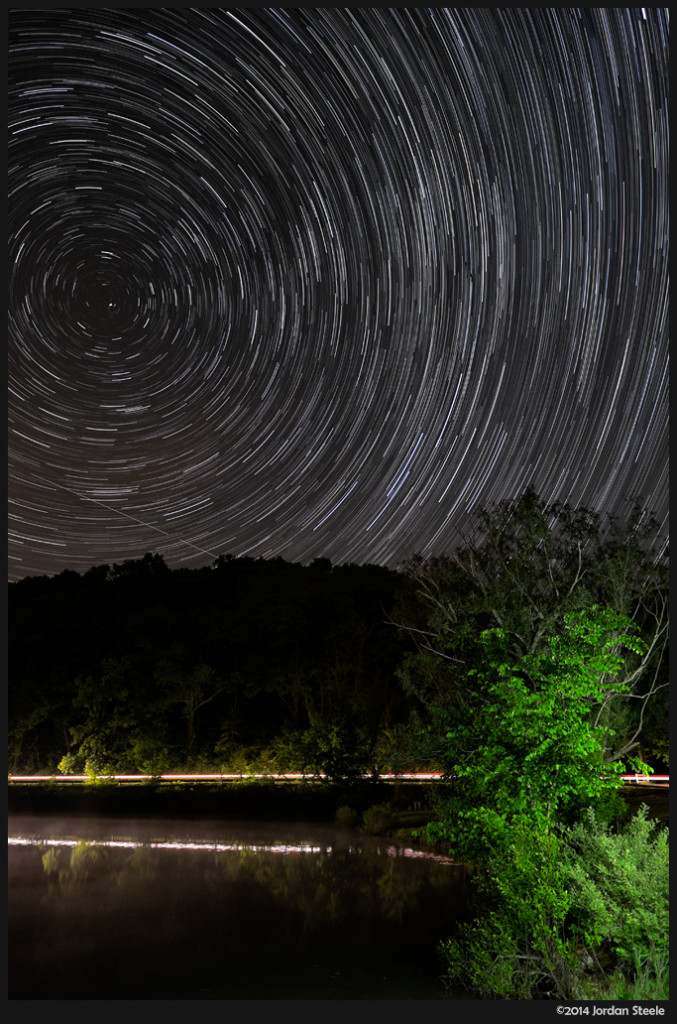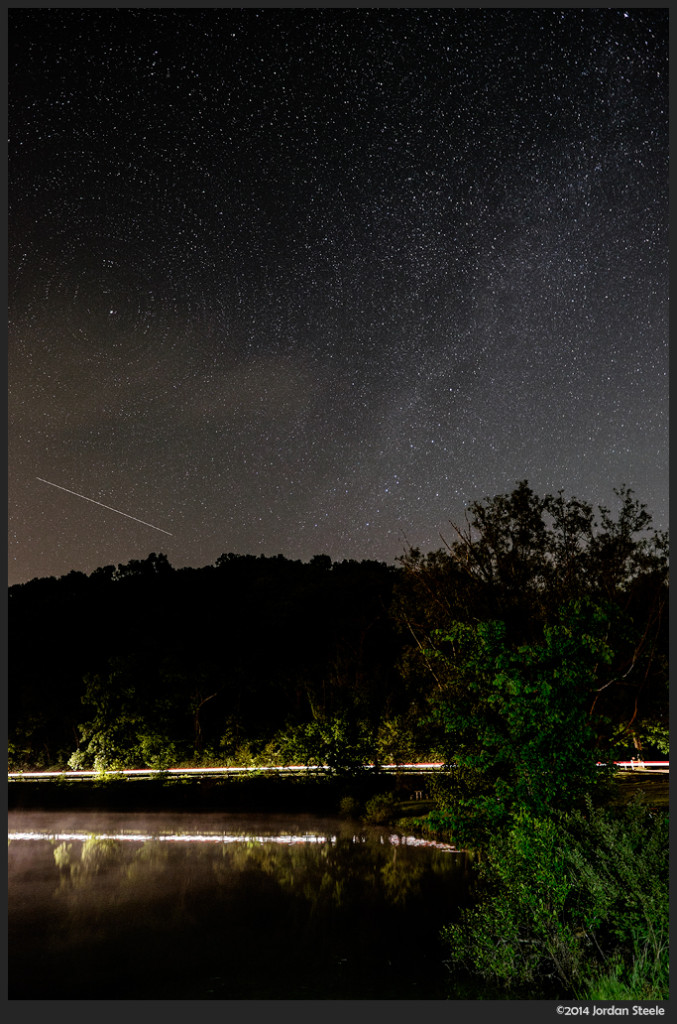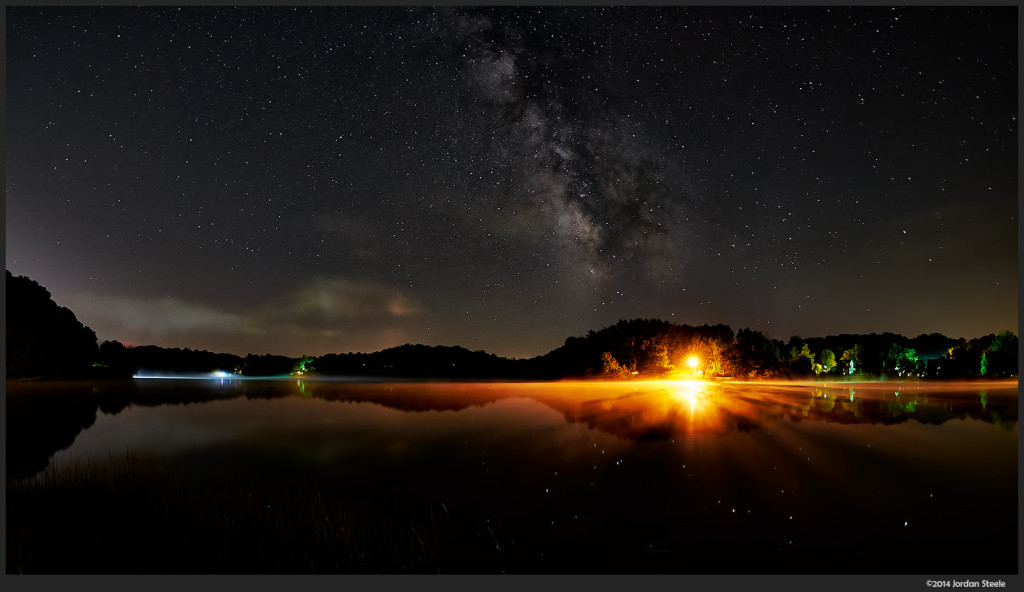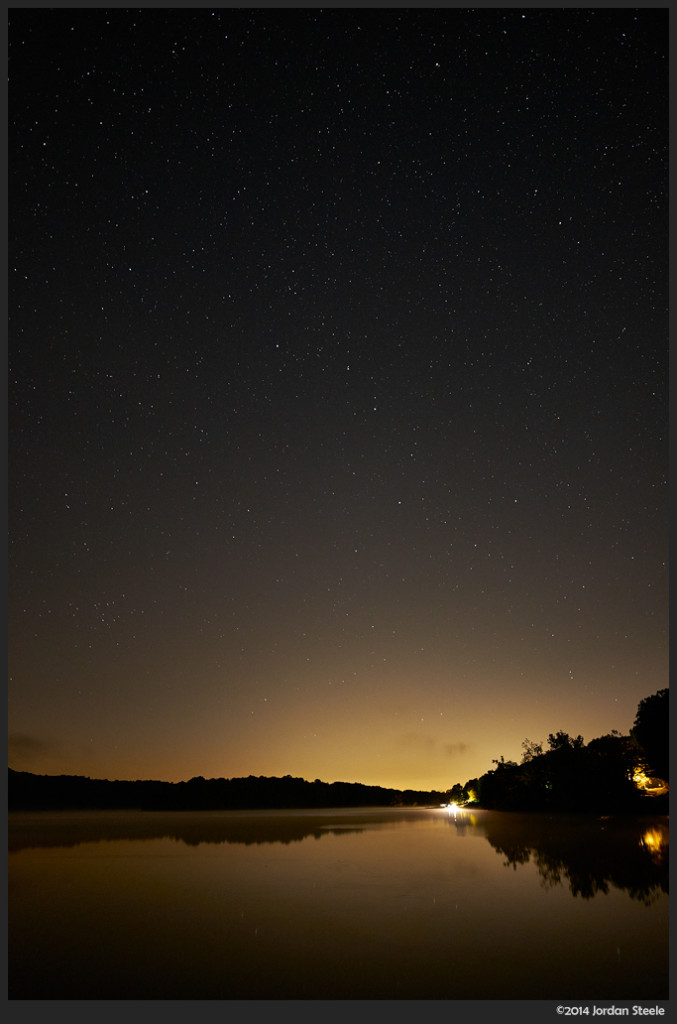I’m not much of a star photos guy. At least, I haven’t been in the past. Not because I don’t enjoy seeing super late night images with the stars gleaming, but because I live near a fairly large city, and light pollution makes capturing images of the stars problematic. It requires a drive a good ways out of town to get to a point where light pollution won’t totally destroy your image, and that’s usually not something I’m up for at 2 AM. However, with the promise of a meteor shower last night and the forecast of a calm and clear evening, I thought I’d try my hand at capturing some star trails and possibly try to catch some meteors.
I used the Dark Sky Finder to see how far out of town I’d need to go to really get away from the light pollution. Because I hadn’t scouted areas in advance that were both publicly accessible late at night and that would make an interesting night foreground against a star field, I thought I’d just search for a lake that I could park near and go for a distant tree line or perhaps some boats for foreground interest. My ideal spot, in a low light pollution area and a public property was going to take me over an hour and a half to drive, and I simply didn’t want to do 3 hours of driving round trip in the middle of the night after a very long day, so I settled on Lake Logan in Logan, OH, which is about a 50 minute drive from my house. While still not in the ideal area according to the dark sky finder, I felt that the sky would be acceptable if pointed away from Columbus at 3AM.
So I woke up at 1:30AM and got in my car, arriving around 2:40 AM, which was supposed to be right in the middle of the peak for shooting stars with this meteor shower. I tried some test shots up the lake (as I knew that facing north was supposed to be the best spot for meteors. Unfortunately, that resulted in very high light pollution glow from Columbus in the distance, so I turned more directly north and simply used the trees and the edge of the spit that I was parked on as the foreground, and pointed my Fuji 14mm up slightly. I set the X-T1 to ISO 800, f/2.8 and 30 seconds, manually focused on infinity and set the X-T1’s intervalometer to take a little over an hour’s worth of photos one after another. Unfortunately, the X-T1’s intervalometer insists on showing the captured image for one second, then using a one second timer, then taking the next shot, adding just over 2 seconds delay between photos. You can’t see it in the web size version, but the arcs from the stars further away from the north star do have small breaks in them due to these delays. In the future, I will use a remote release on continuous shooting for star trails, and simply lock the shutter down until I want to stop.
I eventually stopped the photos after 51 minutes, which is 95 images (or 47.5 minutes of exposure time). During a few of the exposures, I painted the trees with my iPhone flashlight and two cars drove by as well, so I did get some illumination on the foreground. To construct the trails, I used the built-in Photoshop script “Load Files Into Stack.” This can be found under ‘File->Scripts.’ This brings all the files (in this case RAW images) directly into Photoshop as a single file with each image as a separate layer. After all 95 images loaded, I selected them all and changed the layer blend mode to “Lighten.” When all layers are selected like this, it will take the brightest pixel from any image in the stack and show that pixel only…the result is all the stars show through as if they were recorded as a single exposure, while the noise from the higher ISO and longer shutter speed is averaged instead of compounded. The result is an image that is equivalent in motion to a 47.5 minute exposure while having slightly lower noise than a single 30 second exposure.

As you can see in the resulting image, the ‘meteor shower’ was a bust. The only thing moving across the sky was the International Space Station, which can be seen along the bottom left of the sky. Still, it made for a moderately interesting photo, but it didn’t wow me. However, it taught me a lot. This is the first time I’ve photographed star trails, and I highly recommend stacking shots rather than doing a single super long exposure. Not only will you have much lower noise in the final image, but it allows you to be a little creative too. This next shot is from the same sequence, but picks only 3 of the 95 images to use: One of the car passes, one of my light painting images, and the one image with the majority of the ISS streak. The resulting image is somewhat wild:

Since I had been up for a while on short sleep, I didn’t want to try another long star trail photo with a different foreground, and I turned to other directions since the meteors didn’t seem to be falling. The Milky Way was visible arching overhead, and while there was a very bright high pressure sodium lamp across the lake that blasted the area with light, I decided to incorporate it instead. The two shots below are single exposures, in order to keep the stars still, I was limited in exposure time. Click to enlarge any image.


And finally – one last shot looking towards Columbus, to see the light pollution from a city approximately 60 miles away.






Leave a Reply